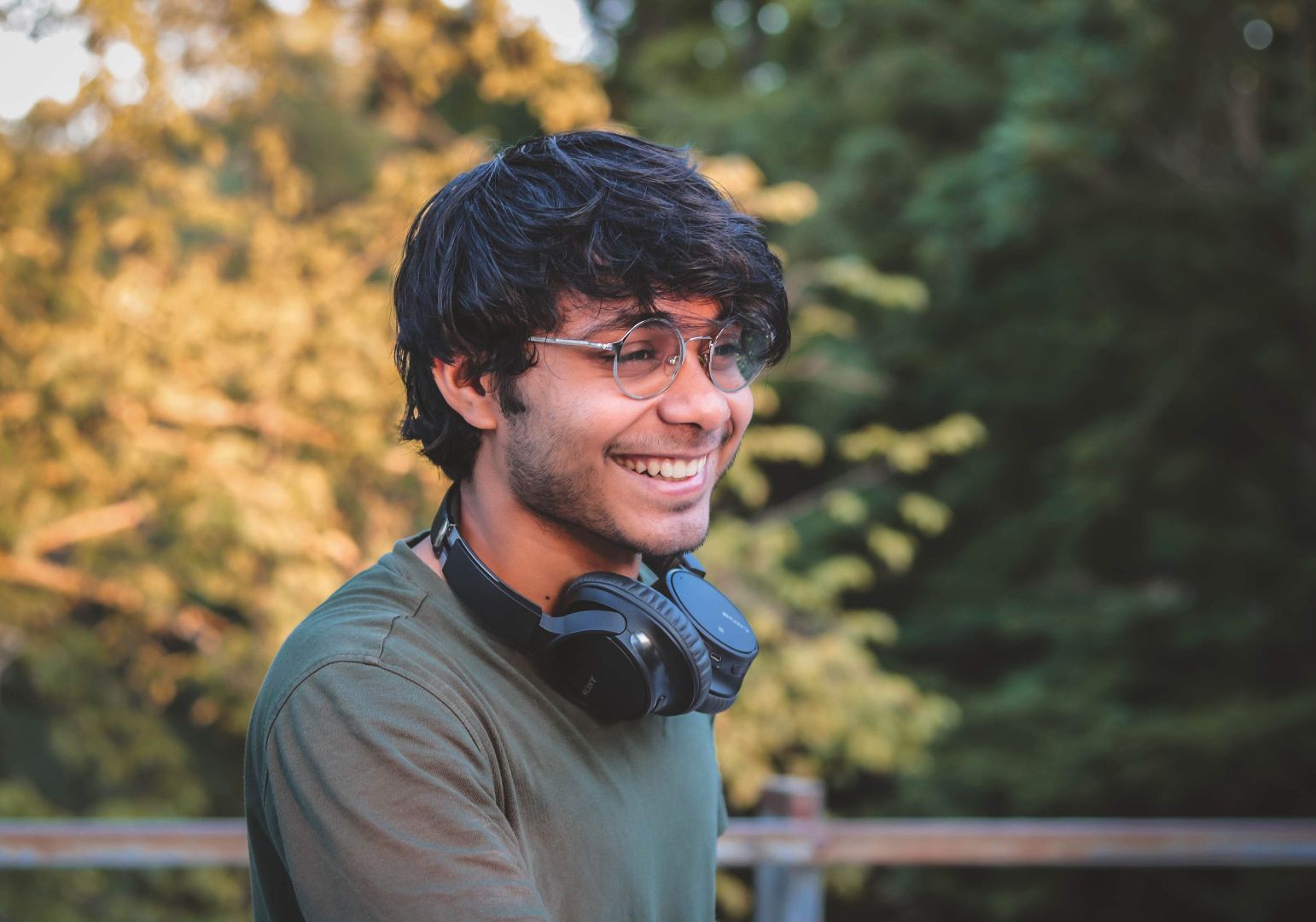Aagosh Chaudhary (He/Him/His) graduated from the College of Engineering in 2022 with a degree in applied engineering sciences with minors in business and film making. Originally from Bhopal, India, he currently resides in Chicago, working full time as a procurement analyst. Aagosh’s writing and photography has been featured in the Red Cedar Review and his films at the University of Minnesota and PressPlay Cinema film festivals.

What is an immigrant but a stranger in two places?
I showed up to this vaguely familiar land in 2018 with no family, no contacts, not even cell service or internet on my phone.
“That’s weird.” I remember thinking to myself at the Detroit Metropolitan Airport. “I don’t know anyone on this entire continent. Or this side of the planet.”
For a second, the sheer scale of that thought swallowed me whole. But as I continued with aching arms, dragging my two suitcases — my sole possessions that weighed more than I did.
I was struck by another thought:
“But wait… No one knows me here either.”
And that excited me.
It was a feeling I knew I would never feel again.
I had the privilege to come to America and I came to feel that freedom. To be able to become anything.
I was a blank canvas with a fresh start.
But see, that's a bald-faced lie (bald eagled, anyone?). Being exposed to the internet and the globalized American media, I had an impression, an expectation of the U.S.A. And it turns out America had one for me as well. It came in the form of something gloriously called “visa restrictions.”
One of the conditions of my F1 student visa is that my job needs to be related to my major: applied engineering sciences. But what I really wanted to be in this new land was an artist.
As a new immigrant, I realized that I — like so many immigrants — am stuck in two places. I have each foot in two wildly different cultures. One, where I came from, my roots, the very foundation of my identity, the culture that formulated the lens with which I see, feel, and perceive the world.
The other, a culture I had to integrate to survive.
It's a hard balance to strike well. To stand ground in the best parts of your own culture, avoiding being perceived as eccentric to a society that only looks at the surface, while maintaining an understanding of their culture to be able to do well in it.
Over the years, I get to go home less and for shorter durations of time. And so, I’ve become a visitor in my home country and a stranger to my own family.
Slowly, they begin to forget you. The time difference and distance inevitably get in the way. And why wouldn’t they?
Life moves on. With or without you.
As your former life shrinks and fades from view, you try so hard to adjust to this place where no one truly wants you because they don’t know how to understand you. You know so much about them and even think in their language. It’s a permanent asymmetry in relationships that is rarely considered, let alone acknowledged.
Is truly fitting in possible? Can you really fit a rectangle box in a square hole? What gets cut out and what gaps are left that never connect?
In this place, you're too different, too “exotic” to ever be familiar. Every document calls you an “alien” after all. The youthful, colorful roar of college disguises that harsh truth. But things are different in the real world.
So how do I stay anchored with the family I left behind? How do I bridge these seemingly irreconcilable cultural gaps and string all these versions of my past selves?
Making art, whether short stories, photography, or films, recontextualizes my experience and feelings in a way that can be shared with everyone, regardless if they’re from my past trying to understand the present me or a different culture, trying to understand my history.
It’s a buoy I cast out for others to find me, when mere words aren’t enough.
My best expression; my best foot forward.
It’s why I made my short film, “Murphy’s Law” to encapsulate these contradictory feelings about this strange land. It is a way to admit and appreciate that the people, place, things you interact with… stay with you. And sometimes, your remnants linger on in their lives.
"ना घर का ना घाट का", is a known saying in India. It means: "Someone who belongs neither here, nor there."
And that’s how I feel as an immigrant artist here in the United States. Because of visa restrictions, it is illegal for me to earn any income through my creative works as they aren’t related to my major. I work a standard, boring 9-5 because as much as I love the arts, I am also a big fan of not starving and being homeless.
So, I live a double life. Double dichotomies. Balancing my Indian roots in America. Just as I try to balance my life as an engineer and an artist.
Alas, I am no pioneer of the human experience. My condition is so common, it is a stereotype for Indian immigrants. There have been millions before me, just as there will be millions after me.
Everything has been said and done before you. A rather discouraging thought. But in the entire history of the universe, it’s never been done by you before.
That simple truth keeps me going.